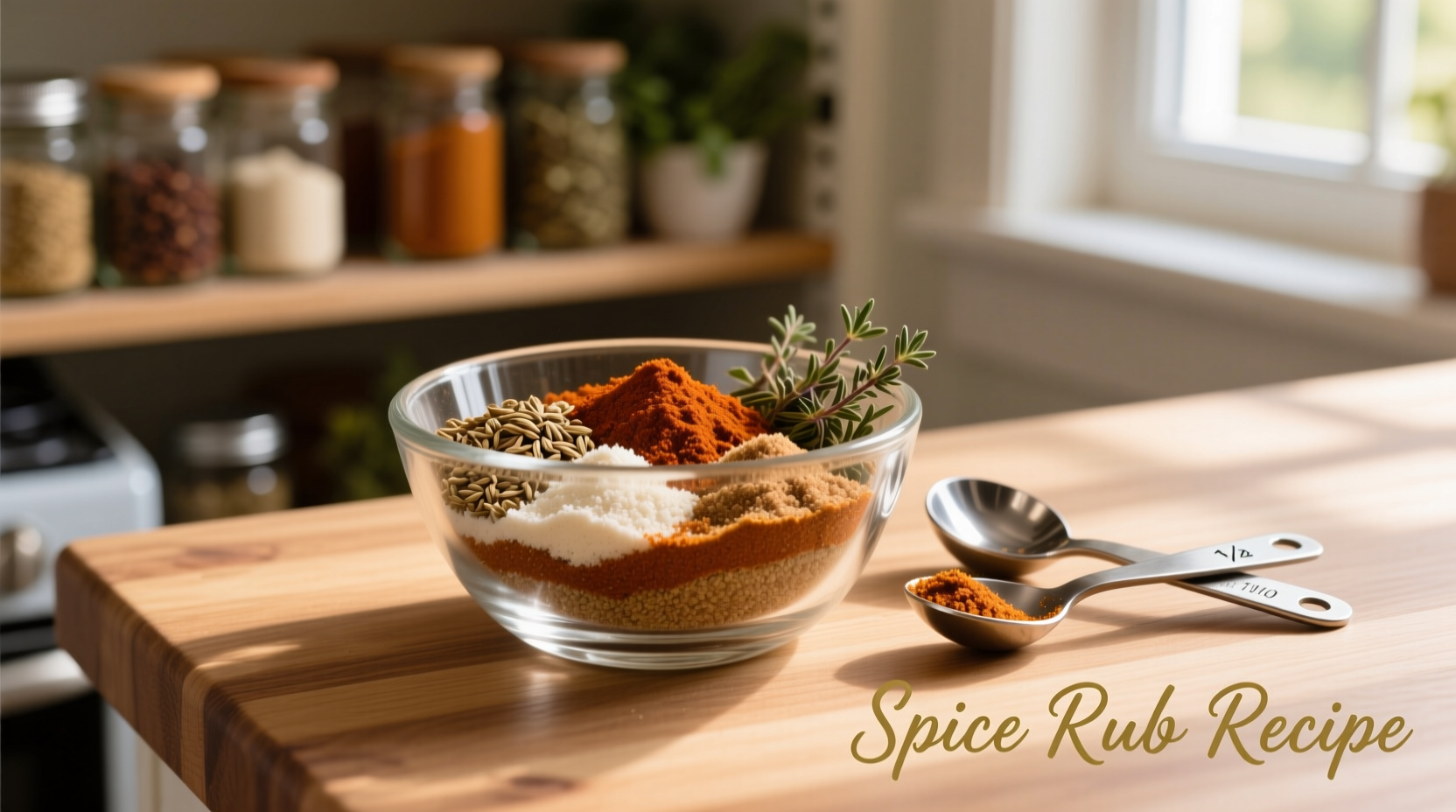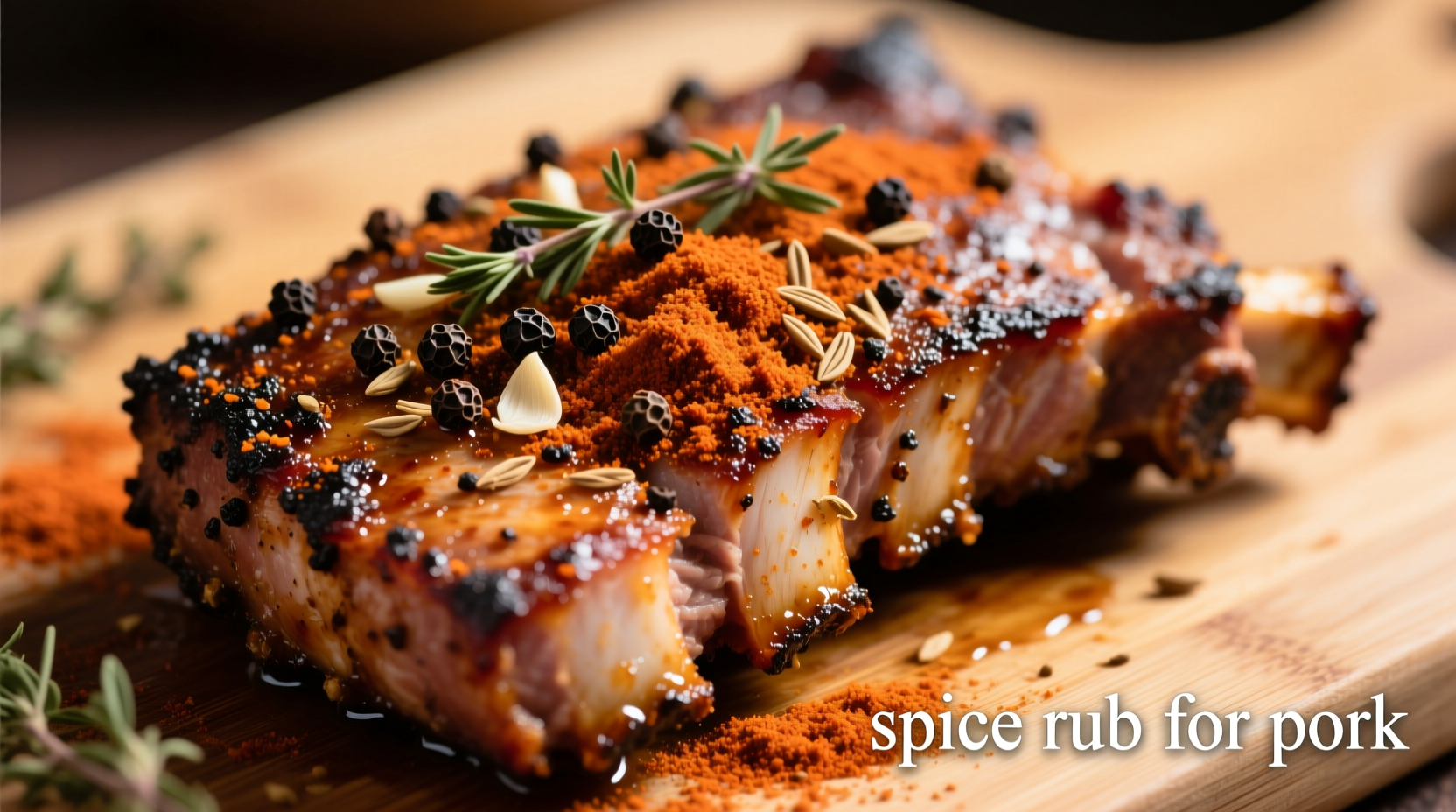Why This Pork Rub Formula Delivers Restaurant-Quality Results
Creating an exceptional pork spice rub isn't just about throwing spices together—it's understanding how flavors interact with pork's unique composition. Pork contains moderate fat content and mild flavor compounds that pair beautifully with sweet elements that caramelize during cooking and warm spices that complement its natural sweetness.
According to research from the Culinary Institute of America, the Maillard reaction—the chemical process that creates complex flavors during cooking—works most effectively on pork when rubs contain both sugar components and amino acids from spices like garlic and onion powder. This creates that irresistible crust while keeping the interior juicy.
Your Step-by-Step Guide to Building the Perfect Pork Rub
Essential Rub Components Explained
Every successful pork rub contains these four critical elements working in harmony:
| Component Type | Purpose | Key Ingredients | Recommended Amount |
|---|---|---|---|
| Base | Flavor foundation and texture | Salt, black pepper | 1-2 tsp each per lb of pork |
| Sweet Element | Caramelization and balance | Brown sugar, honey powder | 1-2 tbsp per lb of pork |
| Aromatic Spices | Complex flavor development | Paprika, garlic powder, onion powder | 1-2 tsp each per lb of pork |
| Heat/Brightness | Flavor enhancement | Cayenne, mustard powder, citrus zest | 1/4-1 tsp per lb of pork |
Proven Pork Rub Formulas for Every Cooking Method
While the basic formula works universally, adjusting ratios based on your cooking method yields dramatically better results:
The All-Purpose Dry Rub (Best for Roasting and Grilling)
- 2 tbsp brown sugar
- 1 tbsp smoked paprika
- 1 tbsp garlic powder
- 2 tsp kosher salt
- 2 tsp freshly ground black pepper
- 1 tsp onion powder
- 1/2 tsp cayenne pepper (optional)
Mix thoroughly in a bowl. Apply generously to pork shoulder, loin, or chops 1-12 hours before cooking. The sugar content makes this ideal for methods reaching 325°F+ where caramelization occurs.
Low-and-Slow Smoking Rub (For Pulled Pork and Whole Hams)
Reduce sugar content by 50% to prevent burning during extended cooking. Increase paprika to 2 tbsp and add 1 tsp celery seed for depth. Apply 12-24 hours before smoking at 225°F for optimal flavor penetration.

Application Techniques That Make the Difference
Professional chefs at the James Beard Foundation emphasize that how you apply your rub matters as much as the ingredients themselves:
- Dry the surface: Pat pork completely dry with paper towels before applying rub
- Oil first: Lightly coat with neutral oil (like grapeseed) to help spices adhere
- Massage in: Use firm circular motions to work spices into surface
- Rest time: Allow at least 45 minutes (or up to 24 hours for large cuts) before cooking
- Layer strategically: For extended cooking, apply half the rub before cooking and half during
Troubleshooting Common Rub Problems
Even experienced cooks encounter these issues—here's how to fix them:
Rub Burning on High-Heat Cooking
Solution: Reduce sugar content by 25-50% and increase salt proportionally. The USDA Meat and Poultry Hotline confirms sugar begins caramelizing at 320°F and burns at 350°F, so adjust for your cooking temperature.
Rub Not Adhering Properly
Solution: Always apply to slightly damp (not wet) meat surface. The Food Science Department at Cornell University found optimal adhesion occurs when meat surface moisture is between 2-5%.
Flavors Not Penetrating Beyond Surface
Solution: Score the fat cap in a crosshatch pattern before applying rub. This creates channels for flavor penetration while rendering fat during cooking.
Regional Variations That Elevate Your Pork Rub
Food historian Dr. Harold McGee's research in On Food and Cooking reveals how cultural traditions have shaped pork rubs worldwide:
- Mexican Al Pastor: Add achiote paste, cumin, and dried guajillo chilies for authentic flavor
- Caribbean Jerk: Incorporate allspice, thyme, and scotch bonnet peppers for traditional heat
- Korean-Inspired: Blend gochugaru (Korean chili flakes), sesame oil, and pear puree for tenderizing
- French Herbes de Provence: Mix dried lavender, thyme, and rosemary for elegant flavor
Storage and Batch Preparation Tips
Prepare spice rubs in larger batches to save time. Store in airtight containers away from light and heat. According to the National Center for Home Food Preservation, dry spice blends maintain peak flavor for 6 months when stored properly. Avoid adding salt to pre-mixed rubs if storing long-term, as it can draw moisture and reduce shelf life.











 浙公网安备
33010002000092号
浙公网安备
33010002000092号 浙B2-20120091-4
浙B2-20120091-4